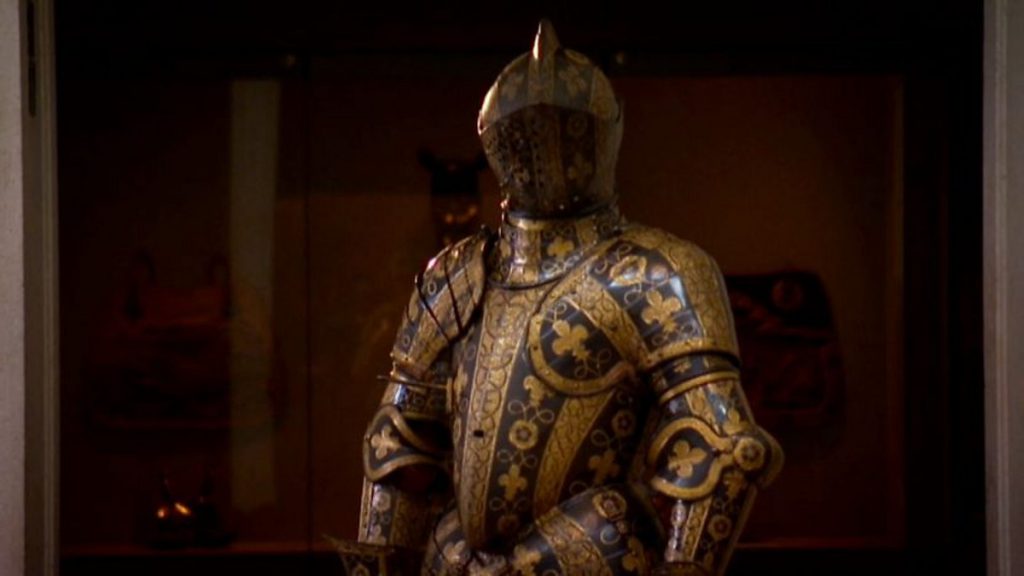Metalworks episode 2 – The Knight’s Tale: Art historian and curator Tobias Capwell celebrates the great age of armour. Referencing the unstoppable rise of the Royal Almain Armoury at Greenwich, he tells the forgotten story of how Henry VIII fused German high technology with Renaissance artistry in the pursuit of one aim – to become the very image of the perfect knight. Using the talents of foreign craftsmen and his court artist Hans Holbein, Henry transformed himself into a living metal sculpture. His daughter Elizabeth I further exploited that image, making her courtiers parade before her in the most innovative and richly decorated works ever commissioned in steel.
Series looking at aspects of British metalworking over the centuries, including the art of the silversmith, the history of armour and the work of the blacksmith.
Metalworks episode 2 – The Knight’s Tale
The word “armour” began to appear in the Middle Ages as a derivative of Old French. It is dated from 1297 as a “mail, defensive covering worn in combat”. The word originates from the Old French armure, itself derived from the Latin armatura meaning “arms and/or equipment”, with the root armare meaning “arms or gear”.
Significant factors in the development of armour include the economic and technological necessities of its production. For instance, plate armour first appeared in Medieval Europe when water-powered trip hammers made the formation of plates faster and cheaper. Also, modern militaries usually do not equip their forces with the best armour available because it would be prohibitively expensive. At times the development of armour has paralleled the development of increasingly effective weaponry on the battlefield, with armourers seeking to create better protection without sacrificing mobility.
Well-known armour types in European history include the lorica hamata, lorica squamata, and the lorica segmentata of the Roman legions, the mail hauberk of the early medieval age, and the full steel plate harness worn by later medieval and renaissance knights, and breast and back plates worn by heavy cavalry in several European countries until the first year of World War I (1914–15). The samurai warriors of feudal Japan utilised many types of armour for hundreds of years up to the 19th century.




